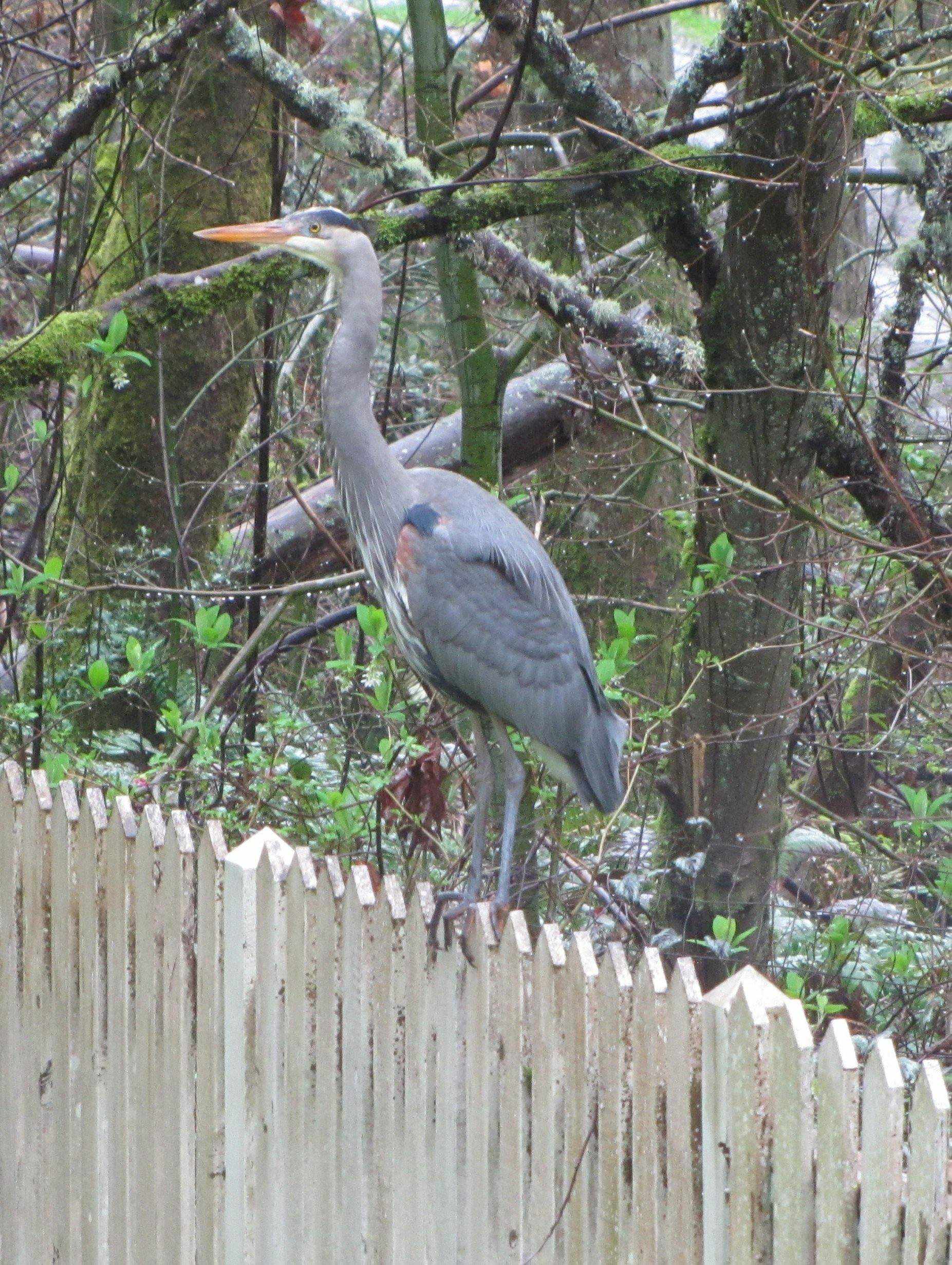You have created an oasis for yourself – and the locale wildlife as well. A pond will mimic a natural water source (not even a swimming pool does that). If you build it, they will come. This is double-edge sword. Many critters will benefit from you pond, but some of the visitors may be destructive or even predatory.
Amphibians: As discussed in the previous article, your feature will attract frogs, toads, salamanders and newts. Amphibians eat insects and seldom bother fish. However, American bullfrogs can be a hazard to small fish. Males will gather in the spring singing for territory and mates. Egg sacks are laid in the water with tadpoles emerging within 1-2 weeks. Tadpoles live in the water until growing into adults and which time most leave the pond for land (although some will stay). Easy access and lots of cover is helpful. When I inherited my pond, there was so much sludge and muck in the bottom, that it had attracted salamanders (a few were 8-12” long!). They were a mutated type as adults retained their gills and remained in water their whole lives. Unfortunately, when I put in proper filtration, the salamanders did not have their sludgy muck layer to live in anymore and left. Some remained in my potted plants though (see previous article's cover photo).
Benign Pond Visitors: Birds will drink and bathe in ponds and mating pairs of waterfowl may visit during the spring to be alone. Attracting birds to your yard reduces insects. I have seen bats drink and catch bugs on the wing just after dusk. Remember, some insects only come out at night, and bats perform the jobs of birds after dark. Small rodents all the way up to large mammals may come to drink from your pond (from mice to deer). Many people dislike dragonflies but they are a prodigious hunter of insects. Adults lay eggs in ponds and larval flies live in the pond for months or even years hunting live insects continuously. Later, the larval fly metamorphosis into an adult dragonfly beginning the cycle again. These are an excellent insect to attract to your yard! Your water feature plays an important role in their survival and life cycle.
Nuisance Pond Visitors: These are creatures that may be drawn for the same reasons listed above, but cause incidental damage to your feature. Some animals may knock marginals, rocks or other items into the pond. Some animals may even munch or uproot your water garden too. They may go for a swim causing a rip in the liner or injure a fish. I had a mole undermine my waterfall causing water to run out of my pond before. Animals can inadvertently introduce weeds, fungus, disease, or even fish (fry have been known to cling to duck feathers) to your water feature. Some aquatic plant seeds are designed to be eaten and passed through an animal’s waste or given a free ride via feet or fur. Anything from rats, dogs, cats, beaver, badgers, muskrats, or even moose could be your culprit. And let’s not forget children either. Consider barriers or fencing (depending on the animal at fault). Having surveillance, motion detectors hooked to lighting or pool alarms may help in this endeavor at identifying the guilty party.
Predatory Pond Visitors: You have spent a great deal of time and effort creating a pond with crystal clear water and stocked it with expensive neon-orange fish which can be easily seen by you and every other creature that comes for a visit. Heron are long-lived birds that remember and return to known water sources annually. They can hunt for hours and even on moonlit nights. They can even regurgitate bate food to trick your fish in coming to the surface. Otter, martens, fox, raccoons and opossums are attracted to water sources and ponds and readily hunt fish, amphibians or other pond life in the water. In warm climes, snakes and even alligators can make their way to your pond and eat fish. Of course, still water may draw a breeding habitat for mosquitoes (who prey on you!). Predator deterrents or decoys target some of these. This can be a tricky issue. Trial and error or a combination of solutions may need to be employed.
Previous Article: 27: Pond Flora and Fauna – Adding Animals
Next Article: 29: Pond Flora and Fauna – Koi and Goldfish Basics

